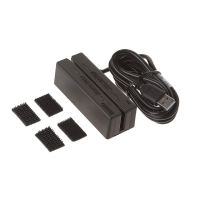17
Syntax: /e/d/fs<space>[length_match]… [string_match]… [search_be-
fore]… [search_between]…[search_after]…<ENTER>
where:
length_match: = a{track_no}(minimum characters)(maximum charac-
ters)
string_match: = b{Track_no}(offset)(length)(string)
search_before: = c{track_no}{field_no}(times) (length)(string)
search_between: = d{Track_no}(field_no)(times1) (length1)(string1)(t
imes2)(length2)(string2)
search_after: = e{Track_no}{field_no}(times)(offset)(field_len)
(str_len)(string)
track_no: = 1 | 2 | 3
field_no: = a...z
Times, Times1, and Times2: Times and Times1 define how many times
a specified string is searched from the start of data on a specific track.
Times2 defines how many times a specified string is searched from
the rest of the data on a specific track after the first string has been
searched.
Offset: The offset of String Match is from the start of data for a partic
-
ular track. The offset of String After is from the start of the rest of the
string, after the specified string, after the specified number of times.
The minimum character and the maximum character values in the
length-match command should allow for the Linear Redundancy check
(LRC) character as well.

